
[ad_1]
Spain has a long maritime history and used to be a major naval power. For this reason, it was of immense strategic importance in the past. It has coastal regions on three of its sides and hence the maritime industry got a boost. It is the base of the trading system in Europe.
Many of Europe’s significant ports are located in Spain. The ports here manage import-export of various goods like petroleum, crude oil, fruits, iron and steel, beverages, etc. 80% of import and 50% of export in Spain is done via seaports.
Fishing is one of the major activities carried out at almost all the ports. All the ports are well connected by roads, railways and linked to the airports as well.
Definitive List of Major ports in Spain
Ports in Spain are well managed and maintained and are constantly working on improving the facilities at the ports with the latest technology. Let us look at the major ports in Spain in detail.
1. Port of Algeciras
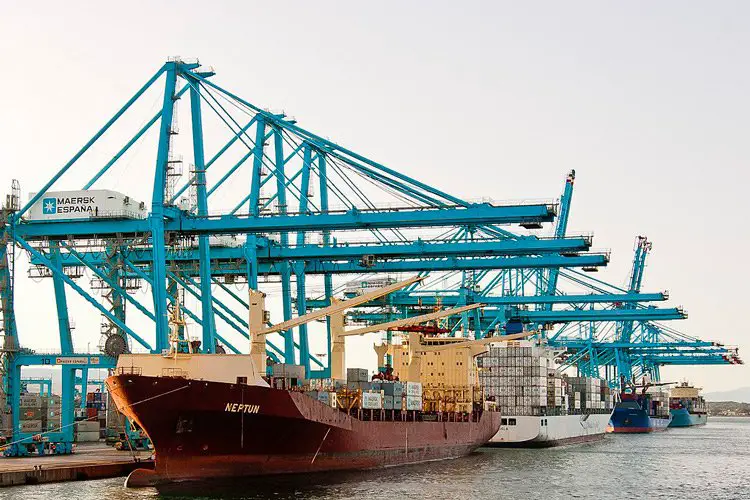
Port of Algeciras
Port of Algeciras (Un/locode: ESALG) is located in the south of Spain. It is a port and harbor of Algeciras city (a port city in Spain), which comes under Cadiz province. The province is an autonomous community in Andalusia, Spain. The port is primarily used as a commercial, fishing, and passenger port.
The transshipment port is located near the Strait of Gibraltar. The Strait of Gibraltar serves as the major east-west shipping route and the port is near the strait which makes it one of the busiest transshipment regions in the world. Another port located near the Strait of Gibraltar is Tanger-Med which is a Moroccan port. It competes with the port of Algeciras for the local transshipment market.
The port is managed by the Port Authority of Algeciras Bay along the Port of Tarifa.
The Port of Algeciras is Spain’s largest port with nearly 100 million tons of cargo in the year 2015. In container shipping, it was ranked 31st in the world in 2018 and overall 33rd in 2019. The record of 70 million tons of total traffic and over 2.8 million containers were exceeded by the port in 2010. When the trade volume of the port was 2.81 million TEU in 2010 it was ranked 7th busiest container port in Europe and 28th in the world.
More than 10 km of quays are constructed along different basins of the port that are responsible for operating every type of passenger and freight traffic.
The port operates cruise shipping, bunker fuel handling, roll-on, and roll-off, and it is also equipped with facilities for a fishing fleet.
The recent volume of cargo tonnage handled by the port in 2019 was 109.4 million tons.
2. Port of Valencia
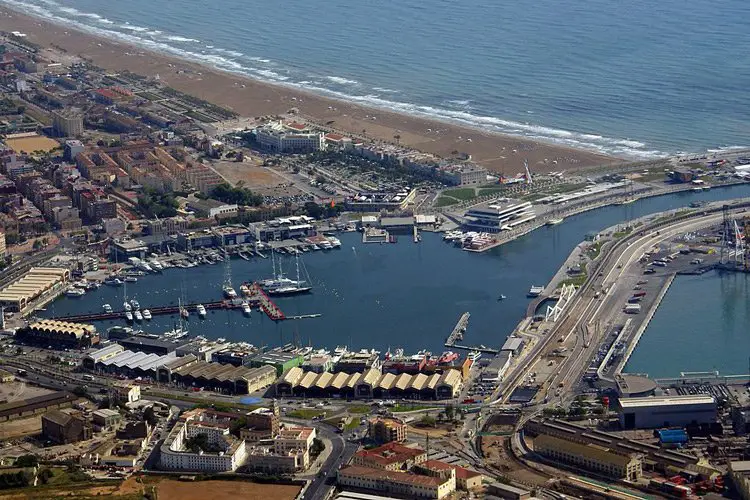
Port of Valencia Pic courtesy: https://www.flickr.com/photos/airlines470/7171964834/
The Port of Valencia (Un/locode: ESVLC) is located in the Valencia city of Spain. The port is known to be the 5th busiest port in the continent of Europe and in the region of the Mediterranean this port is the busiest of all.
The history of the port dates back to 1483 when a King gave the privilege to build a wooden bridge on the great district beach. At that time the port did not perform well because of frequent flooding of the Turia River and the continuous movements of sand on the beach. Although the traffic at the port started increasing, Valencia became the sixth maritime province of Spain.
The port is operated by the Port Authority of Valencia. This Authority operates three ports, namely, Port of Valencia, Sagunto, and Gandia. Authority is also planning of making a new container terminal at the port by 2030.
Port of Valencia is a major port in Spain and it is a center of economic activity that influences about 350 km of the area around it. This accounts for 51% of the GDP of Spain and equals half of the working population of the whole country.
The quay length that the port has is 12 km and the total storage area available at the port is 300 acres.
The annual container volume of the port was 5.4 million TEU and the annual cargo tonnage was 81.1 million tons in 2019. There are about 72 berths available and 15,000 employees working at the port.
Also read: Biggest Ports in China
3. Port of Barcelona
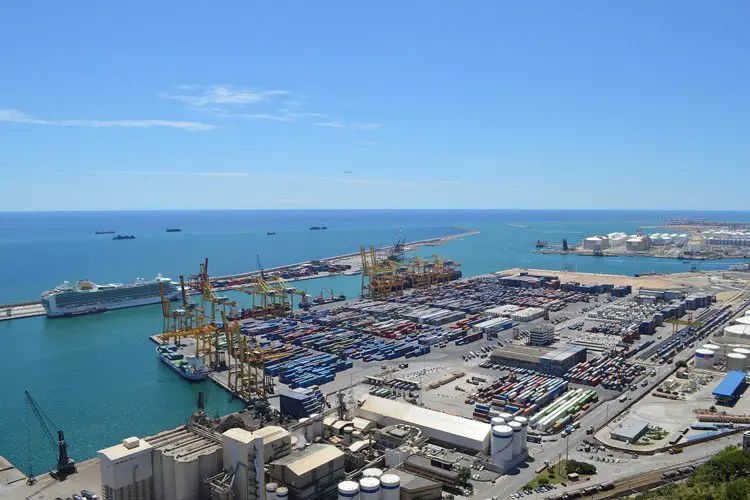
Port of Barcelona
The Barcelona Port (Un/locode: ESBCN) is associated with a 2000-year history and it holds chief economic importance as one of the major ports of Europe in the Mediterranean area. It is also the largest port in Catalonia which is an autonomous community of Spain.
The Port of Barcelona ranks 9th in Europe and 3rd in Spain for being the largest container port. The management of the port is done by the Port Authority of Barcelona and it is owned by the Ports of the State.
The area of the port is 7.86 square kilometers and is divided into three different zones which are Port Vell, the commercial or industrial port, and the logistics port.
The Port Vell is in charge of handling yacht harbors, fishing ports, landing areas cruise ships, some destinations of the Mediterranean, and maritime stations for ferries. The central area of Port Vell falls under a designated tourist zone and hence there is Maremagnum which is a shopping mall and nightlife complex, IMAX Port Vell, and a multiplex cinema. It is also home to the largest aquarium in Europe.
The industrial port manages the industrial-based activities and logistics port which is a Freeport is a free trade zone and is just 5 kilometers away from Barcelona International Airport. Thus it is easily accessible.
The data says that 9,038 vessels arrived at the port in 2018. The container volume managed by the port was 3.4 million TEUs in 2018 and the annual cargo tonnage that was managed was 67. 7 million tons in 2019.
4. Port of Bilbao
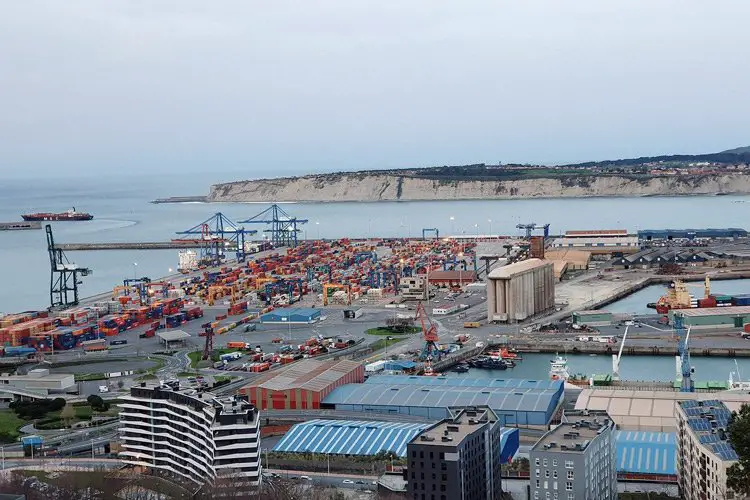
Port of Bilbao
The location of Bilbao port (Un/locode: ESBIO) is near Bilbao Abra bay in Biscay, an autonomous community in northern Spain. Nearly 15 kilometers west of Bilbao, there are Santurtzi and Zierbena municipalities, which are the main facilities of the port.
The land area covered by the port is 3.13 square kilometers and the water-occupied area is 16.94 square kilometers along 17 km of waterfront.
The history of the port is related to the history of Bilbao city. The port came to be formed simultaneously with the formation of the city. The port has a long history of industrial use in the past.
It is the 4th busiest port in the country of Spain. It is the largest port of Spain by area. The connection system of the port is also good with railroad and high-speed connection networks. The port handles cruise ship traffic, ferries, and many other ships.
The annual cargo tonnage of the port was 35.5 million tons in 2019.
5. Port of Cartagena
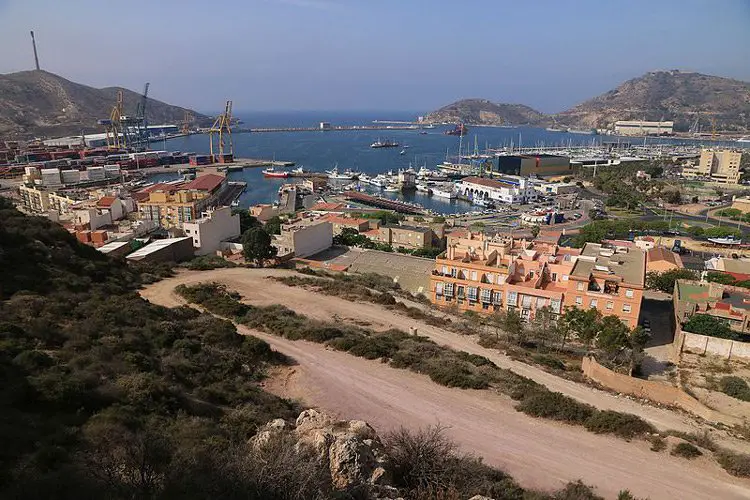
Port of Cartagena
The Port of Cartagena (Un/locode: ESCAR) is located in the Cartagena city of Spain. It ranks fourth in freight traffic in the country just behind Algeciras, Valencia, and Barcelona. When it comes to the number of cruises it is ranked 8th in the country. The annual cargo tonnage in 2019 at the port was 34.5 million tons.
The Port of Cartagena is of vital importance for the Region of Murcia as 60% of export and 80% of import of the region is done via this port. The Port also receives over 40% of the tourism traffic of Cartagena city.
It lies near one of the main East-West maritime routes that connect the Suez Canal and Strait of Gibraltar. Thus it holds great economical importance and the natural bay offers a good harbor making it strategically significant.
In history, it was used by the Punic civilization and then by the Romans. The port is now operated by the Port Authority of Cartagena. The types of harbor available are commercial port, naval base, fishing port, and marina.
6. Port of Huelva
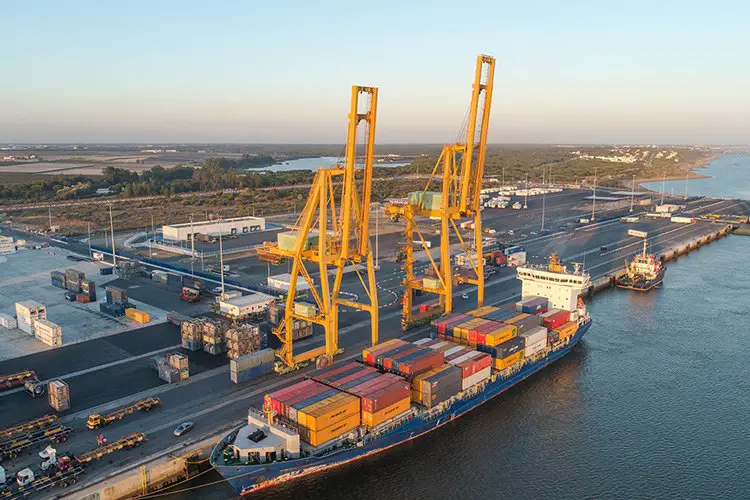
Port of Huelva. Pic courtesy: https://www.yilport.com/en/ports/default/Huelva-Spain/117/0/0
The Port of Huelva (Un/locode: ESHUV) is located on the southwestern coast of Spain in the autonomous community of Andalusia. It is a cargo and fishing port and belongs to the municipalities of Huelva and Palos de la Frontera.
It is Andalusia’s second-biggest port behind the Port of Algeciras. The port is handled by the Port Authority of Huelva.
The port is located at the estuary that is formed by the two rivers, Odiel and Rio Tinto. The Huelva region was rich in metals and was a renowned exporter of silver in ancient history. By the time of the 1960s, much of the activities were shifted to Puerto Exterior which was suitable for ships with the large draft. The Levante dock in Puerto exterior was then kept for fishing, with the specialization in the commercialization of frozen fish.
The annual cargo tonnage at the port was 33.8 million tonnes and the annual container volume was 70,852 TEU in the year 2019.
Also read: What is a container depot?
7. Port of Tarragona
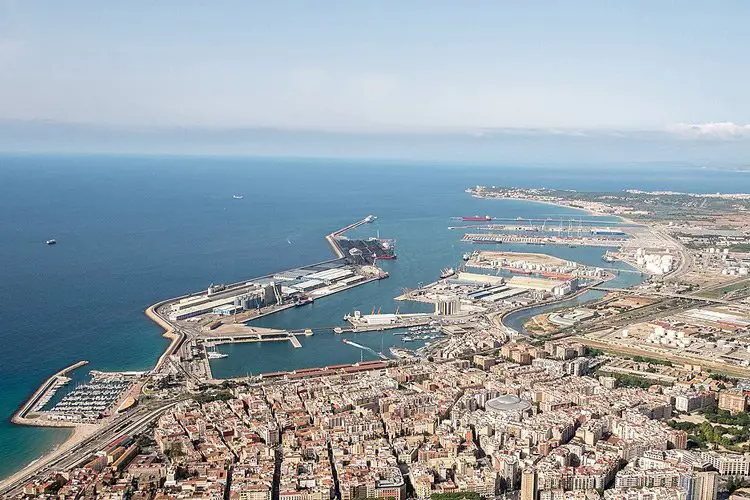
Port of Tarragona
The Tarragona port (Un/locode: ESTAR) is located in northeastern Spain. It is operated by the Port Authority of Tarragona.
The port has a long history associated with it. It is home to busy ports and chemical industries. There are many famous tourist spots near the port. It also includes two docks, namely, Aragon and Lerida Docks. The port covers 213 hectares of area. The exterior port offers space for the mooring of vessels and also has a floating dock. The exterior port is also equipped with pipelines for transferring tons of crude, crude petroleum, and naphtha.
The port has an inflammable zone where chemical products are managed and a terminal is particularly dedicated to it. It also has a wharf named Castilla wharf that contains a terminal for the management of oils, fats, and fertilizers.
The annual cargo tonnage recorded for the port is 33.3 million tonnes in 2019.
8. Port of Las Palmas
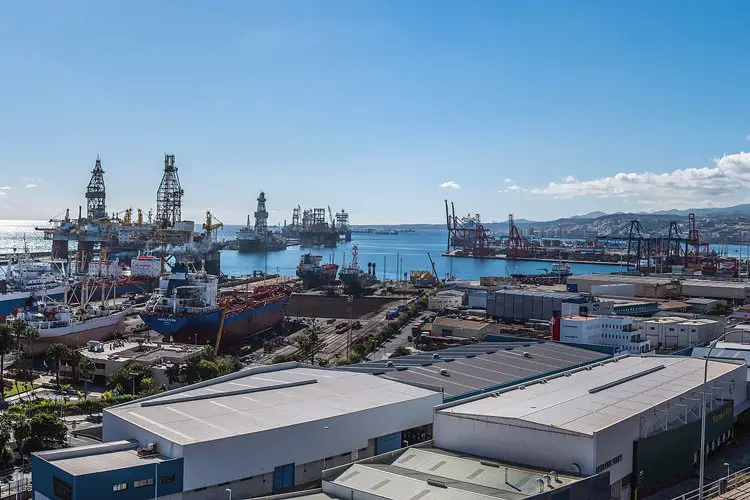
Port of Las Palmas. Pic courtesy: https://www.flickr.com/photos/bnsd/32536213726/
The Port of Las Palmas (Un/locode: ESLPA) is also called La Luz Port. It is located in the city of Las Palmas to the northeast of Gran Canaria. Gran Canaria is one of the islands of the Canary Islands in Spain. The port is operated by the Port Authority of Las Palmas.
The Port has been the major region for supplying ships that are on the way through the Middle Atlantic since the last five centuries. It is the first port in the Mid Atlantic and the Canary Islands. The port experiences the traffic of ships that move around in Europe, America, and Africa.
It is one of the major ports in Spain and in 2011 it was ranked fourth for being the busiest container port in Spain and handled about 1.3 million TEUs of container traffic in that year. In 2019 the annual cargo handled by the port was 22.8 million tonnes.
9. Port of Castellon
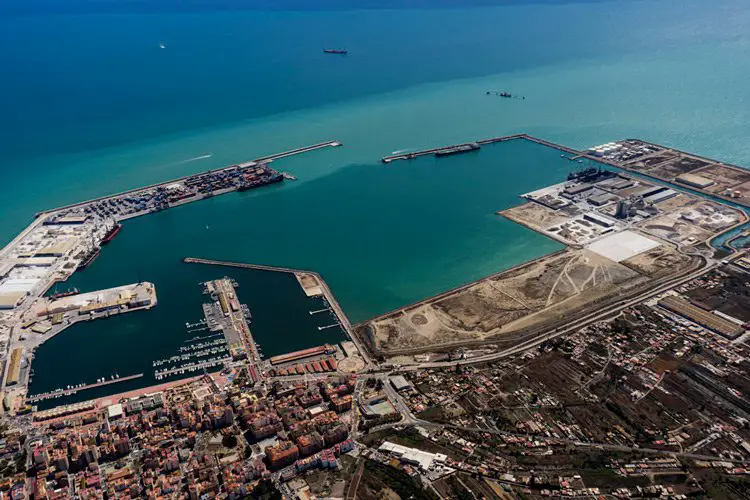
Port of Castellon. Pic courtesy: https://www.portcastello.com/
Castellon port (Un/locode: ESCAS) is a small port and is established in the city of Castellon de la Plana to the eastern side of the country. It is the latest formed port in comparison to other major ports in Spain.
It is a multipurpose port that is divided into three different major commercial parts. Those three areas are Darsena Sur, Darsena Norte, and Darsena Interior. The port also has a particular port allocated as a fishing port. Goods that are mainly imported here are bulk minerals, crude oil, fertilizers, chemicals, and cereals, and goods that are exported are refined oil products, citrus fruit, fertilizers, tiles, and chemicals.
A small shipyard is located southwest of the port in Burriana. This shipyard can handle ships up to 3,500 DWT. The port is operated by the Port Authority of Castellon. The annual cargo that the port handled in 2019 was 20.7 million tonnes.
10. Port of Gijon – Musel
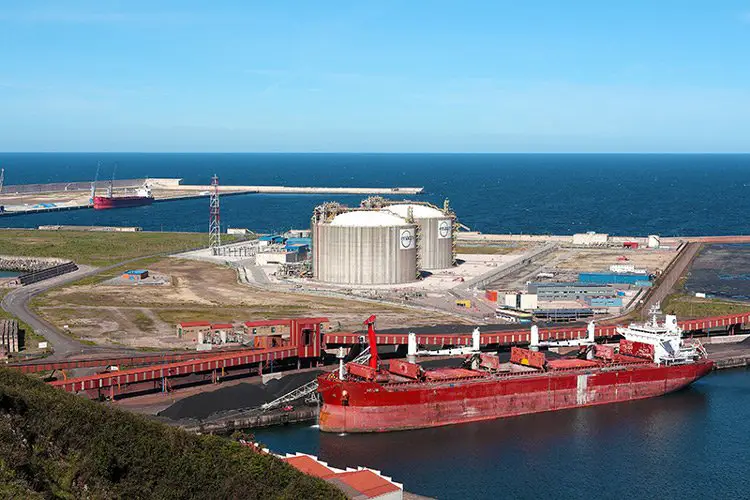
Port of Gijon – Musel. Pic courtesy: https://www.puertogijon.es/en/port/
The El Musel Port (Un/locode: ESGIJ) is situated in Gijon city that is to the north of Spain in the autonomous community of Asturias. The port of Gijon is an entrance to Europe and is located in the middle of the Cantabrian sea coast.
Back in the old days, the Gijon port used to have a small dock which was usually dry due to low tides. It is still a dry port and the top dry bulk port in Spain. The unloading facilities have improved and now it has the capacity to unload up to 17 million tons of cargo a year which was 12 million tons a year in 1992. 20 million tons of iron ore and coal traffic was reported at the Port of Gijon in 2010 which has increased since then.
The port is capable of handling three bulk carriers of 230,000 tonnes deadweight and with a draught of 20 meters. The new dry terminal that is going to be constructed will have an unloading capacity of up to 25 million tons. The annual cargo tonnage of the El Musel seaport and Gijon port together is 17.4 million tonnes.
11. Port of Coruna
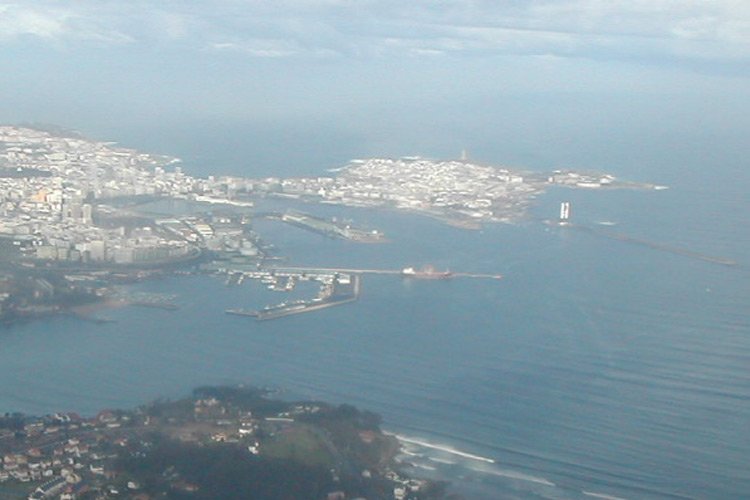
Port of Coruna
Port of Coruna (Un/locode: ESLCG) is located at Coruna city in the country of Spain. The land area occupied by the port is 1.15 square kilometers and the 9.94 square kilometers area is occupied by water along 7 km of waterfront. The port is operated by the Coruna Port Authority.
The Port area is divided into three different regions namely commercial docks, fishing basins, and Marina and Antedarsena basins. The sheltering dock at the port is used for small and leisure crafts and it also has Harbours master’s office, sea traffic control tower, and other offices. The liner’s dock is the passenger vessel dock and Marina Tidal Basin’s dock is mainly for coastal fishing boats and other small boats.
The Battery dock handles general goods, bulk cargoes, and roll-on/roll-off traffic. Several other docks manage general goods like vegetable oil, fruits, and many others.
The port successfully handled 1.4 thousand merchant ships, 762 fishing boats, and around 34 thousand passengers in the year 2005. The cargo records reached 14 million tons and fish hauls to almost 29 million kilograms in the same year. Now, in the recent data of 2019 the annual cargo operated at the port was 13.6 million tons.
12. Port of Ferrol
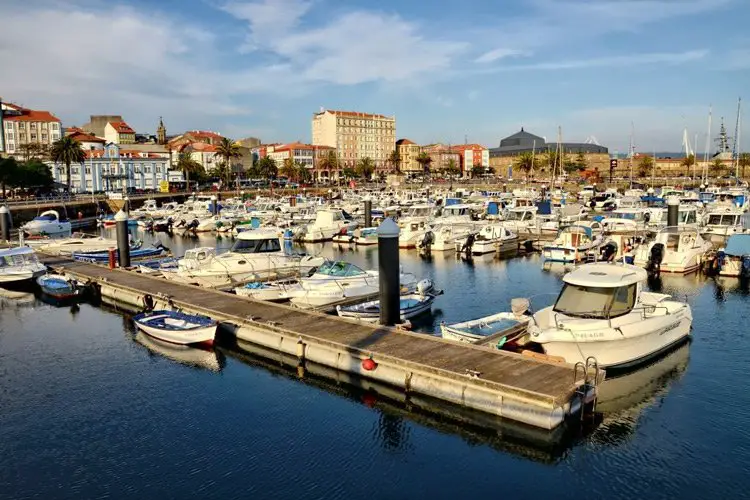
Port of Ferrol
Port of Ferrol (Un/locode: ESFRO) is a medium-sized port located in the A Coruna province, Galicia, Spain. The port has been the base of trade and naval activities because of the favorable natural conditions suitable for ocean-going traffic.
The port is managed and operated by the Port Authority of Ferrol. The port is developed enough to handle bulk cargo and general goods. The inner port has commercial quays containing roll-on/off-ramp and this inner port handles the general goods.
The outer port has several docks and a long protective seawall. There is a container terminal at the outer port that accounts for a handling capacity of 250 thousand TEU per year. A coal terminal is also present in the outer port and it handles millions of tons of coal each year. Local industry and energy sectors are managed by the Liquid Bulk Terminal.
The port operated 11 million tons of cargo in 2007. In 2019, the port has an annual cargo tonnage of 11.1 million tons.
Also read: 15 Interesting Facts About The Straits of Gibraltar
13. Port of Sagunto
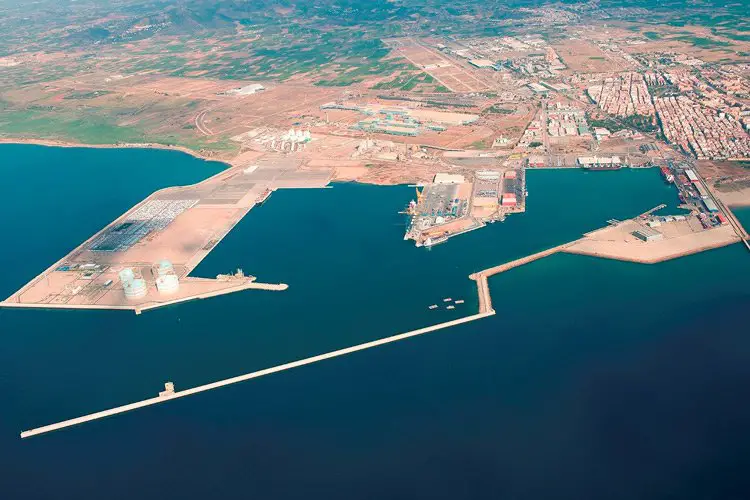
Port of Sagunto. Pic courtesy: https://www.valenciaport.com/en/the-works-of-the-construction-project-of-the-railway-access-to-the-port-of-sagunto-go-to-tender/
The Port of Sagunto (Un/locode: ESSAG) is near the Port of Valencia. It is a small port, located on the eastern side of Spain. The port is operated by the Port Authority of Valencia.
The port receives imports of iron and steel from India. The port ranks 13th in the country for the management of liquid bulk traffic and 7th for vehicle movement and non-containerized goods.
The Valencia port is in the process of constructing a third dock at the port and data says that till now it has invested 360 million euros. The aim of building a third dock is to increase the strategic importance of the port.
The annual cargo tonnage capacity of the port was 7.0 million tons in 2019.
14. Port of Santander
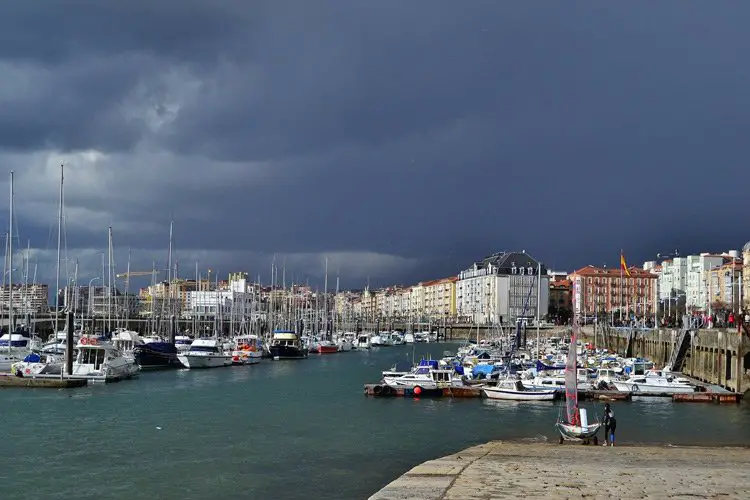
Port of Santander
Santander Port (Un/locode: ESSDR) is in the Cantabria Province of Spain. It is situated on the coast of Santander Bay. The economy primarily depends on tourism, shipbuilding, fishing, and heavy industries. Other activities that are carried out at the Bay are refining of oil, making of steel, and agricultural activities.
The port carries trade activities with countries like the United Kingdom, Germany, France, Belgium, and many other countries. Agricultural cargoes are managed at the new terminal in the port and it is well equipped with modern technology.
The terminal for chemical products handles biofuel, and petroleum products. Four quays along the port manage general goods like wire rods, iron and steel products, wood, etc. There is also a terminal that is dedicated to handling forestry products.
The passenger terminal is situated in the city center and commercial regions. This terminal is only four kilometers away from the International airport. Every terminal and dock is linked with rail facilities.
The annual cargo tonnage of the port in 2019 was 6.6 million tons.
15. Port of Aviles
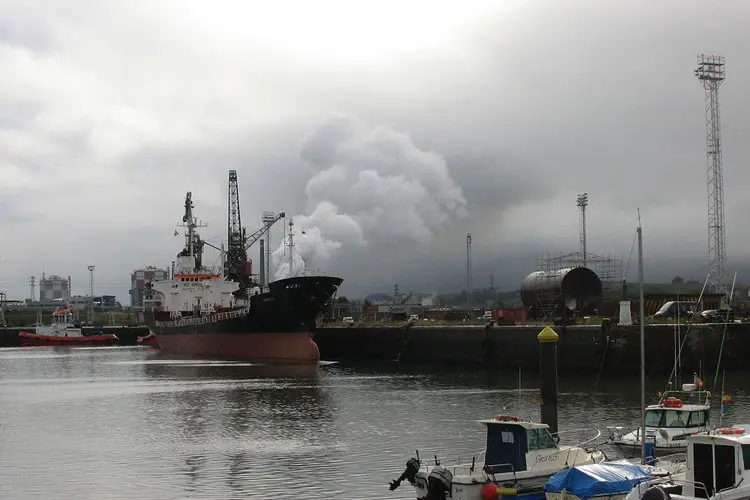
Port of Aviles
Port of Aviles (Un/locode: ESAVS) facility is located in Aviles town in Asturias, Spain. Fishing and leisure craft facilities are available at the port and can handle breakbulk, liquid bulk, and bulk. It has nine piers and is operated by the Port Authority of Aviles.
The South and West docks handle dry and liquid bulk cargoes. The Raices dock also manages dry bulk, liquid bulk cargoes along with solid bulk and general cargoes. The Port also has a Fishing Dock. Two ice factories are present at the Fishing Dock that can store 160 thousand tons of fish each day.
The port managed to handle 5.1 million tons of cargo in 2005 among which 3 million tons were solid bulk and 1.5 million tons were general cargo. In 2019, the annual cargo tonnage capacity of the port was around 5.1 million tons. It has been consistent in the annual cargo tonnage since 2005.
16. Port of Malaga
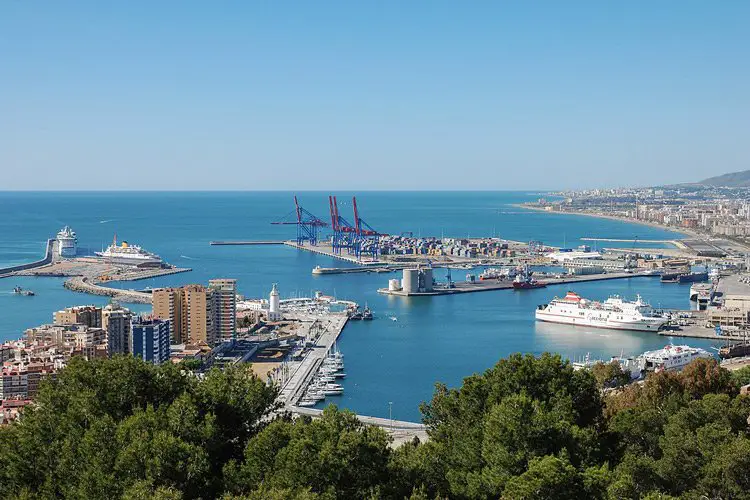
Port of Malaga
The port of Malaga (Un/locode: ESAGP) is the oldest port in terms of continuously operated port in Spain and one of the oldest in the Meditteranean region. It is located in the municipality of Spain, Malaga.
The port manages cruise ships, import of containerized manufactured goods, breakbulk, and vehicles. The annual cargo tonnage of the port was 3.5 million tons in 2019 which has increased from 2.9 tons in 2013.
Also read: Interesting facts about the Caspian Sea
17. Port of Vigo
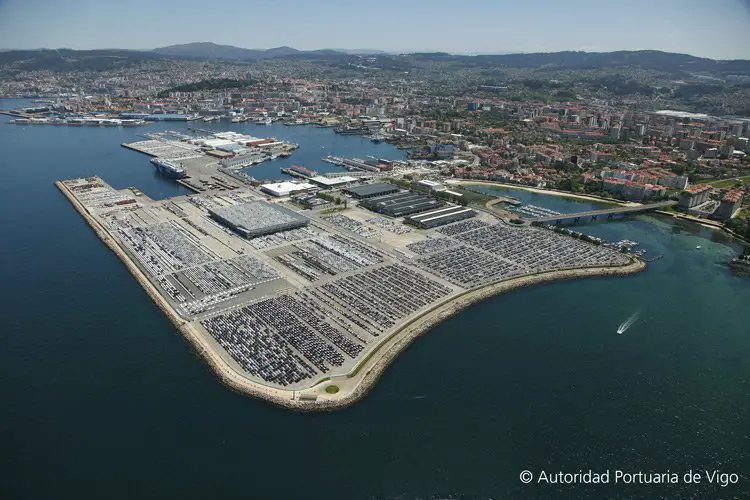
Port of Vigo. Pic courtesy:http://www.apvigo.com/
The largest fishing port on Earth is the Port of Vigo (Un/locode: ESVGO). It is located in Vigo city, Galicia, Spain, and is operated by the Port Authority of Vigo. Many of the big fishing companies prefer Port of Vigo for their business. Fishes are sent to different countries and all over Spain from this port.
Different docks are constructed for different purposes such as Marina Dock is built for handling yachts, Beiramar and O berbes is for fishing vessels, and many other such docks.
The annual cargo tonnage handled by the port in 2019 was 4.2 million tons.
18. Port of Seville
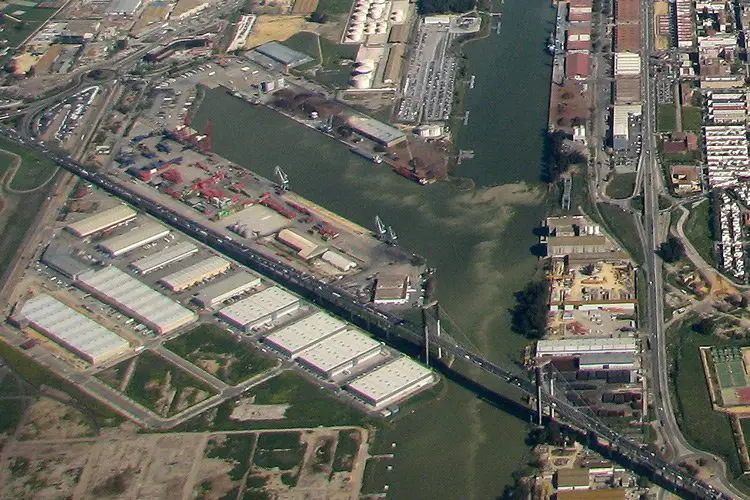
Port of Seville
Port of Seville (Un/locode: ESSVQ) is a very important commercial river port from where olives, fruits, and minerals are exported. This inland port is built on the eastern bank of the Guadalquivir River. It has a very old history dating back 2000 years. It is operated by the Port of Seville Authority.
19. Port of Ibiza
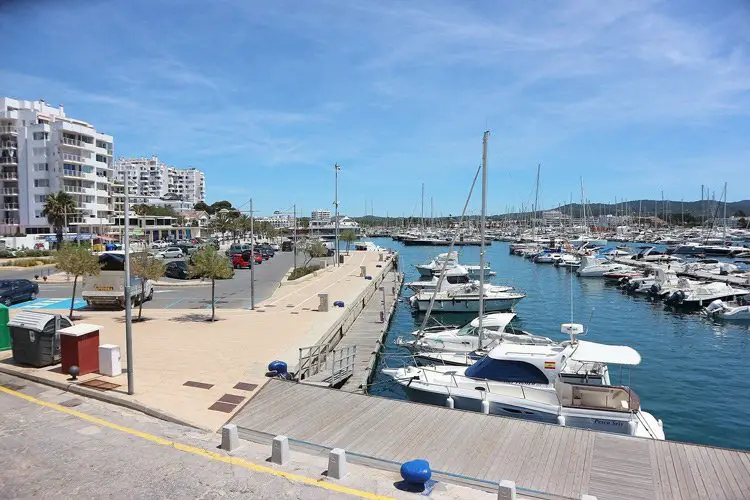
Port of Ibiza
Port of Ibiza (Un/locode: ESIBZ) is located in the town of Ibiza, Spain. This port is a minor port with the Botafac breakwater and several recreational decks. Ibiza is a famous tourist destination and hence, the Ibiza Port mostly caters to recreational vessels like cruise ships and a few commercial vessels.
20. Port of Santa Cruz de Tenerife
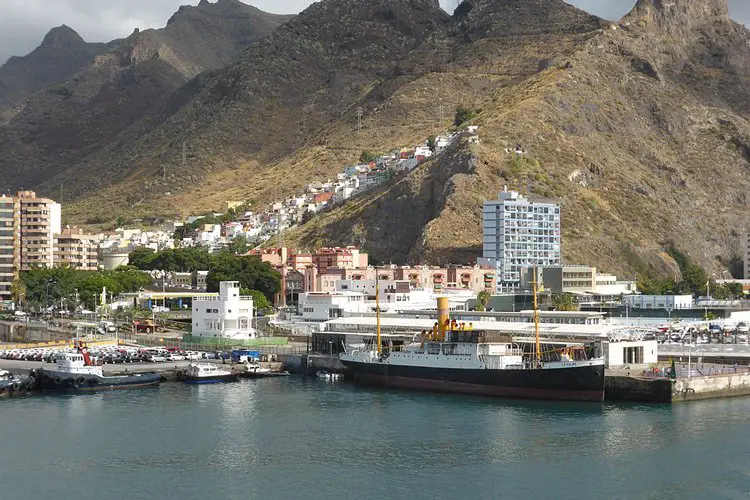
Port of Santa Cruz de Tenerife
Port of Santa Cruz de Tenerife (Un/locode: ESTCI) is the main cruise and ferry port serving the Canary islands. It is mainly used by fishing boats, passenger and commercial vessels. This port also serves as a staging port for many shipping lines.
These were the major ports in Spain. Important information about each port is mentioned in the article. Some ports may not be mentioned but all the major ones are covered.
[ad_2]
This article has been posted as is from Source